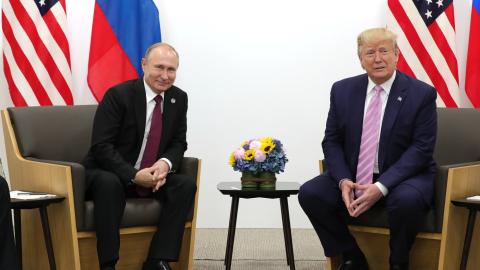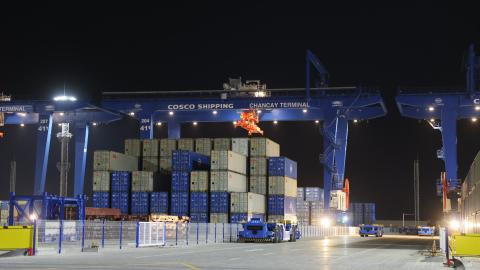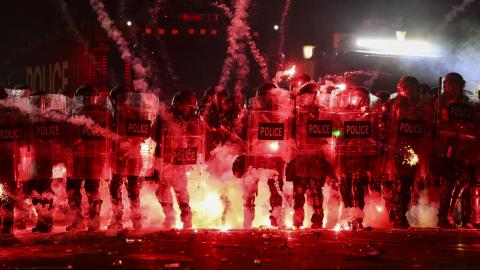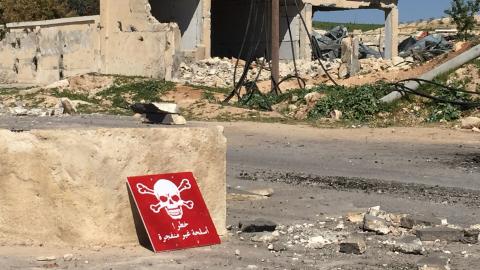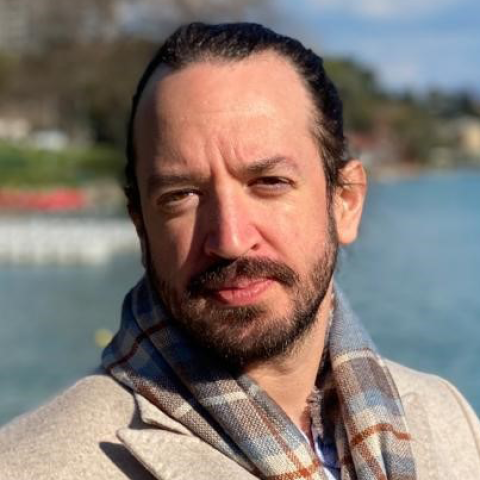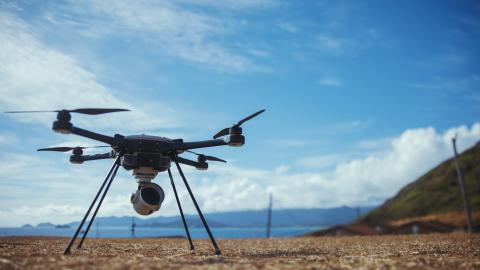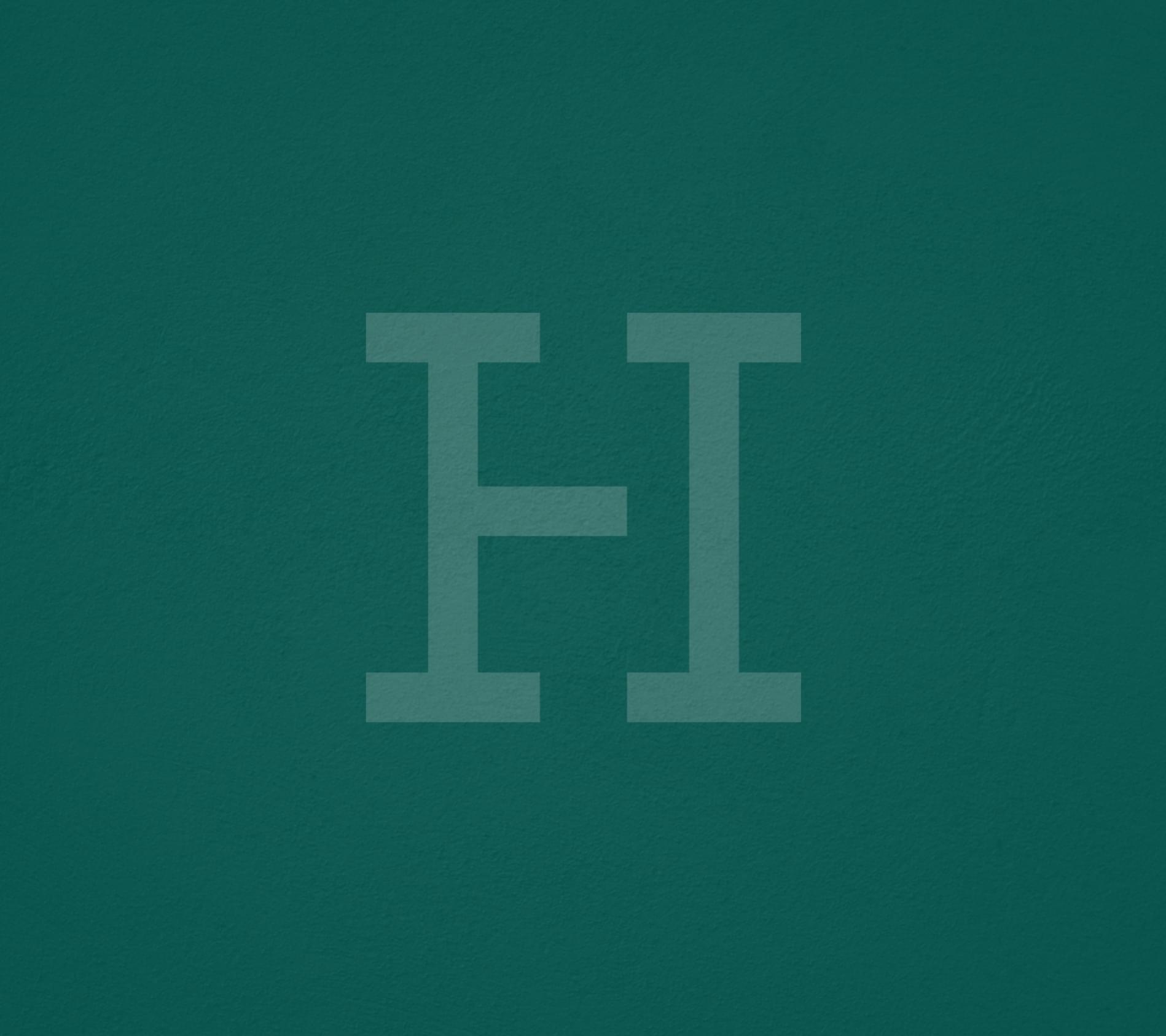LAHORE, Pakistan — I begin my journey through Asia in Pakistan on the day Chinese authorities publicly confirm reports of an outbreak of coronavirus in Wuhan.
It’s January 9 and large numbers of Pakistan’s Chinese community are heading home for the lunar New Year. Most won’t return, likely saving the country from becoming one of the main victims of the epidemic.
My travels — part of a professional trip of conferences, lectures, meetings and literary festivals — will take me across the Continent, giving me an inside look at how countries respond to the virus as it spreads in real time.
The range of reaction — from complacency to panic and alarm to ruthless pragmatism — is as wide in Asia as it will later be across Europe. I come across cases of failure, cases of good fortune, and cases of careful planning that my fellow Europeans would do well to emulate.
* * *
From Pakistan, I cross the land border into India on January 20, the day President Xi Jinping makes his first public statement on coronavirus. Crossing with me is Venki Ramakrishnan, a biologist and winner of the Nobel Prize in Chemistry. We had spoken together at a public event in Lahore. The outbreak never came up, not at the event or in conversation — the reports of deaths in Wuhan so far seem limited to people with pre-existing illnesses.
It doesn’t take long for the situation to change. On January 23, Xi imposes a strict cordon sanitaire on Wuhan and three other cities. Two days later, as I wait in Jaipur for a short flight to Agra, I’m joined in the terminal with a crowd of Chinese tourists, all of them heavily masked. One young man wears a giant black ventilator, looking distinctively cyberpunk. Does he know something we don’t?
Panic starts to spread, and I’m not immune. In Delhi, getting ready for the next leg of the trip to Kathmandu, I finally decide to buy a mask. The pharmacy is out, so the attendants suggest I take some vitamins instead. When I relay the story to the concierge at my hotel, he hands me a small bag with about half a dozen surgical masks. Do not tell anyone, he whispers.
At the airport, I have a short argument with a security officer who wants to touch my phone to check my ticket — surely imprudent at a time of a global pandemic, I insist.
When I reach the security line, the person behind me is none other than Ramakrishnan, whom I had last seen at the Pakistan border more than a week earlier. As we place our bags in trays and lay them on the conveyor belt, he tells me that there is nothing to fear. The odds of getting the virus are minimal and the odds of dying from it if you get are negligible, he says.
I wait for Ramakrishnan at the other end of the security check and ask him what he thinks the odds are of two people meeting in Pakistan and then by chance running into each other in India 10 days later. Surely, they too are minimal. He laughs.
* * *
Arriving in Nepal, it strikes me that this is a country especially vulnerable to the epidemic.
Population density is high, the health care system is underfunded and several religious festivals in the next few weeks will bring large crowds together.
Chinese tourists are everywhere and the Kathmandu district where I am staying is actually a boisterous Chinatown where businessmen from the mainland arrive every day. There is only one reported case so far, a figure I find impossible to take seriously. As I watch the dead being washed in the Bagmati river running through Kathmandu, I wonder if even the oldest traditions will survive the virus.
I leave on an empty night flight to Singapore. A complex global situation is becoming clearer. The pandemic has moved on two levels — one visible, the other invisible. It is a story of business connections, tourism and global travel. It is also a story of illegal trade, spying and secret networks.
Nepal, I have learned, is the transit point for illegal wildlife trade into China. Better roads across the Himalayas have made it easier for smugglers to carry live pangolins, the animals thought to be responsible for transmitting the novel coronavirus to human beings across the border. Although sales of pangolins are forbidden in China as part of a worldwide ban, they are still smuggled in from India and a few African countries.
A little-known link between Iran and China, for example, helps fill another blank in the coronavirus story. Iranian religious organizations active across Asia are trying to convert Sunni communities to Shia Islam, a radicalization expert in Singapore tells me.
Missionaries from Qom, Iran’s second-holiest city and major pilgrimage site, are sent abroad with the goal to bring students back to Iran, often with generous scholarships. Many of them are active in China, although Iran prefers to keep their activities quiet. But these links almost certainly explain the severity of the outbreak in Iran, which at this time is already roaring across the country.
* * *
If landing in Singapore’s empty Changi airport is an eerie experience, it doesn’t take long to adjust to the measures the city-state has taken to fight its own outbreak.
Masks are not readily available — they’ve been reserved for medical professionals — but hand sanitizer is everywhere. My public lectures have been canceled, but smaller meetings proceed as planned. Handshakes are quickly disappearing, and people try to keep a couple of meters apart.
There are reminders of the virus wherever you look: Your temperature is measured constantly, testing is pervasive and new cases are plotted against every available data point in order to anticipate the potential progression of the epidemic.
During a meeting with the dean of a Singapore university, he suddenly excuses himself, leaving the room to take his temperature and upload photographic evidence of the result to a dedicated website.
Despite the high number of cases recorded, there is a sense that things are under control — or at least as much under control as they can possibly be. It’s possible to forget to worry about the virus for long stretches of time.
When I tell former civil service chief Peter Ho that I think China — after two weeks of hesitation — has overreacted to the problem, he politely demurs: “Actually what we learned during SARS is that you need to overreact to this sort of thing. Better to overreact.”
As we say goodbye, we opt for a namaste, keeping our distance.
* * *
On the flight from Singapore to Manila, I no longer wear a mask. It seems obvious by now that the danger lurks elsewhere: in all the people handling your passport and boarding passes, in the fingerprint sensors at immigration.
I notice a new civility between passengers. People keep their distance and everyone seems calmer. Why pick a fight about the overhead bins when that can only force you to interact with other human beings?
If Singapore was all about planning and preparation, the mood in Manila is one of shock and fear.
Most people are wearing a mask, but good ones are not easily available. People use what they can find — a handkerchief, a dirty rag — to cover their mouths. It’s mostly the poor who are taking this precaution. Eschewing a mask has become a status symbol, marking the healthy from the unhealthy, the strong from the weak. In the wealthiest parts of Manila, people’s faces are bare.
Driving toward Manila Bay, I spot a young man weaving a vespa through the dangerous traffic. He is carrying a small child on his lap and the child has a tiny mask hanging down his face, a talisman against the cruelty and injustice of life in the megacity.
At an official level, the Philippines is trying to execute a tricky balancing act. When I meet Foreign Minister Teddy Locsin for lunch, he is about to leave for a meeting in Laos designed to show support for China. Meanwhile, travel from China has been banned as a result of strong public pressure.
Manila Bay, usually crowded with Chinese expats, feels empty. Next to my hotel, a Chinese restaurant and nightclub have been shuttered.
The world has changed since I was in India a month earlier: Cities and neighborhoods bustling with Chinese activity have gone quiet, leaving behind an abandoned landscape.
* * *
The last leg of my journey takes me to Vietnam. On paper, the country should be among the most vulnerable. It has a large Chinese community and Chinese tourists are still arriving in large numbers. Its border in the north is the most active Chinese border.
But Vietnam appears to be managing the epidemic with flying colors. Only a few cases have been recorded so far, and so far they have all recovered.
After a few hours in Ho Chi Minh City, it is easy to see why the situation is under control. The hot weather may have helped, but Vietnam has a second weapon in the war against the virus: widespread dread.
People have taken matters into their own hands. Here, the virus invades your every thought, even if your body remains safe.
Entering a restaurant involves washing your hands with sanitizer, getting your temperature measured and being led by a fully masked hostess to your dark corner. All taxi drivers wear masks and some add gloves to the uniform. Every conversation touches on coronavirus, every coughing incident is remarked upon and tourists are asked about their provenance.
Countries such as Singapore and Vietnam have been here before: The SARS experience taught them not take anything for granted, to take every precaution before it’s too late.
There may be something else at play too. In an epidemic, collective action matters more than in normal times. You need people to act as a social organism, not as individuals.
In the end, the measures that limit the spread of the virus are not so much the official ones — screenings, cancelations, closures — but the conscious and unconscious changes in habits of millions of people: More time at home, no handshakes, no stepping into crowded elevators, frequent hand washing.
During an outbreak, the social organism needs to adapt quickly. In Vietnam, it seems the bulk of social distancing is done privately and voluntarily. Can we do the same in Europe?
Read in POLITICO
